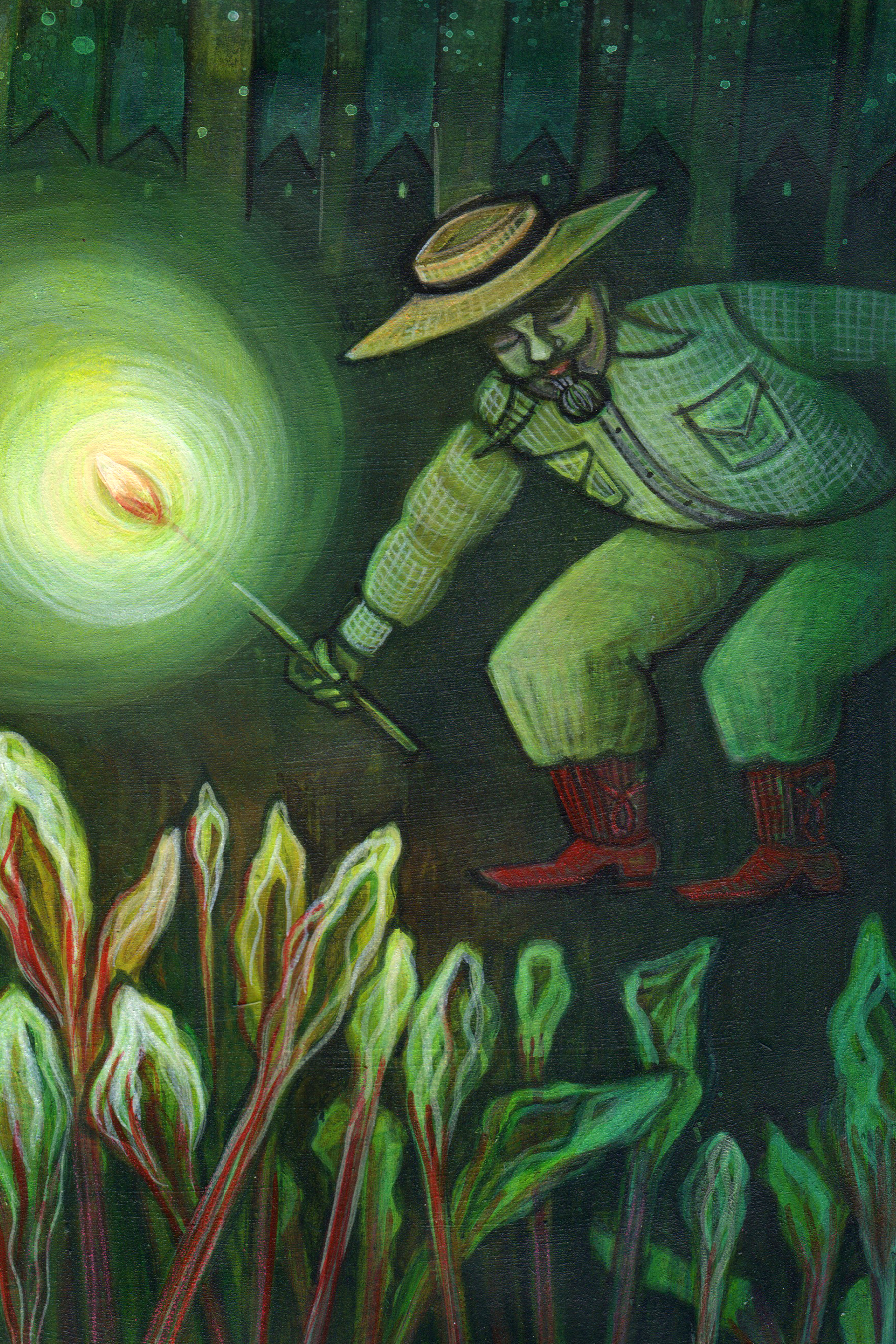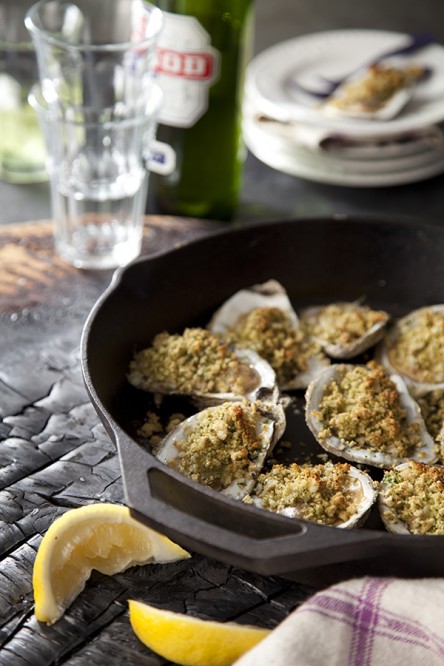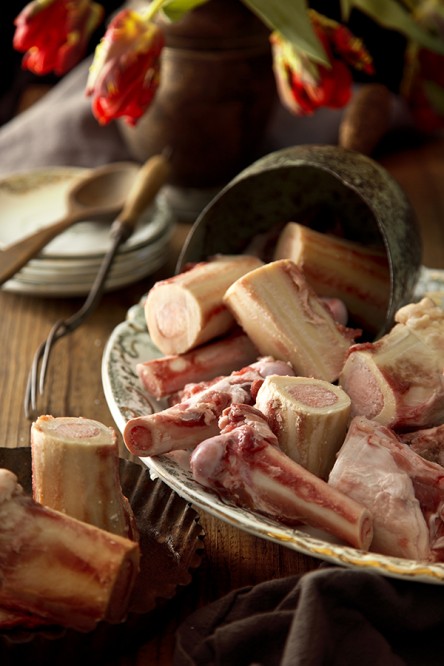Words and Artwork by katherine sandoz
Rhubarb’s approximately 2,700 year history sounds rich and, naturally, dirty. To wit, the vegetable sits in manure and woolen (or other waste) matter as it braves cold winters and shoots up in earliest spring. Native to Siberia, Tibet, China, the Mongolian plateau or all four, two major varieties prevail. The medicinal type stands at five to eight feet and after chopped, dried and made into tea, knocks out diarrhea…and constipation. Stew – or rumble – on that fact for a minute.
The second, the culinary variety, used for its tart and vitamin-plentiful stalks, grows toxic leaves that, if eaten at the very wrong time, can arrest more than one’s intestine.
In the 1800s in England, in what became known as the “Rhubarb Triangle”, farmers forced the “pie plant” in low sheds kept dark. Responsible for ninety percent of the world’s rhubarb at the time, harvests took place under candlelight so that the leaves would not turn dark green (or poisonous) with stalks emerging particularly tender.
Today, farmers in West Yorkshire, England between Wakefield, Morley and Rothwell keep the candles lit and the stalks sweeter than ever. Thanks to Franklin and Jefferson, Americans to this day enjoy what they call a fruit (tariff situation) in pies and jams.
In fact, wherever there is a bit of a cold in the air globally, find the handsome and hardy rhubarb under sugar, salt or chili.




